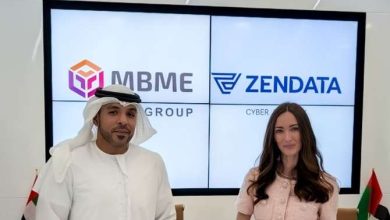Fortifying the Digital Frontier: Why Cyber Security is Essential for Countries and Businesses
Dr. Robert Statica *
The FBI’s effort to persuade Apple for access to the iPhone belonging to the San Bernardino shooter has reached its conclusion. While this situation ignited discussions about the balance between privacy and encryption for the wider population, it is undeniable that both corporations and governments must persist in employing encryption and additional cybersecurity strategies to safeguard their information and assets.
Entities should implement cybersecurity measures to protect their confidential information and intellectual property. It is crucial to prevent eavesdropping, espionage, and unauthorized data access, especially given the surge of cybercriminals offering hacking-as-a-service (HAAS) to the highest bidder and the growing incidence of cyber warfare by nation-states targeting essential technological infrastructures in relation to terrorism, hacktivism, espionage, and organized cybercrime.
A lack of cybersecurity and insufficient levels of resilience could incapacitate governments and nations following a devastating attack on vital infrastructure, including oil and gas distribution systems, power grids, financial markets, air traffic management systems, nuclear installations, military drones, and satellites. The existing cyber threat environment features highly intricate, multifaceted, all-encompassing attack vectors that present a clear and pressing risk to even the most advanced economies worldwide. Such an assault holds the potential to disrupt the global financial system.
Concurrently, the Internet of Things (IoT) is set to become a target for nation-states, cybercriminals, and terrorists. Many IoT devices lack effective security protocols while collecting substantial quantities of personally identifiable information (PII) related to their users and their locations. If these devices are breached, it could result in identity theft, exploitation, and blackmail of influential figures as well as minors.
Data and information have become invaluable, evolving into the world’s premier digital currency and foremost weapon. This signifies the dawn of weaponized data, with data itself now serving as both the victim and the weapon in cyberattacks.
Governments and businesses should treat data with the gravity of a nuclear facility; it must not be left unguarded or exposed, lacking fortified and diverse security layers. Neglecting this responsibility may lead to irreversible damage exceeding control measures. The fallout could be catastrophic, with the asymmetric cyber threat evolving to turn everyone and everything into a potential target.
The contemporary cyber warfare landscape may render traditional military forces, maritime power, politics, legislation, law enforcement, and international treaties increasingly irrelevant. When critical infrastructure can be compromised by an individual equipped with merely a personal computer and internet access, the rules of engagement significantly shift, equalizing the battlefield. Only those nations willing to adapt to the evolving cyber environment will survive and effectively address the persistent threats.
The development of End-to-End Total Security Solutions (E2E-TSS) as an advanced encryption and all-encompassing solution is both urgent and essential to protect communications, networks, financial systems, governmental bodies, military organizations, enterprises, and private individuals from cyber incursions. While encryption is a vital element of cybersecurity, it is not the sole remedy. Organizations must evaluate all endpoints affecting data both in motion and at rest—ranging from the devices that create and transmit the data to the internet service providers, telecommunications operations, and end-user devices. Understanding who and what interacts with the data across internal networks, storage systems, or cloud environments is equally crucial as monitoring data in transit.
Adherence to policies and regulations (Governance, Risk, and Compliance), in tandem with implementing solutions such as Computer Network Defense (CND) and Security Operations Centers (SOCs), is essential to establish multiple layers of protection for data, ensuring a truly holistic cybersecurity strategy. While encryption is not a comprehensive solution, it remains a crucial defense line and often acts as the only barrier shielding data from potential hackers.
*Senior Vice President– Technology and Research, DarkMatter







